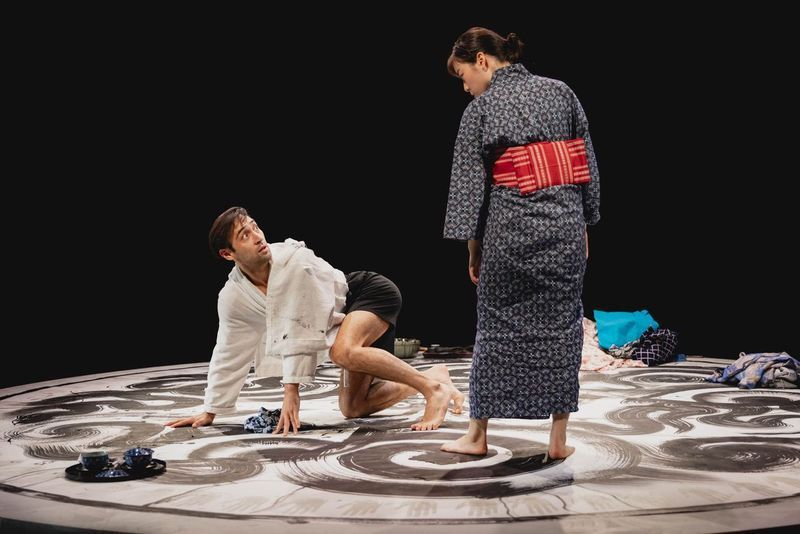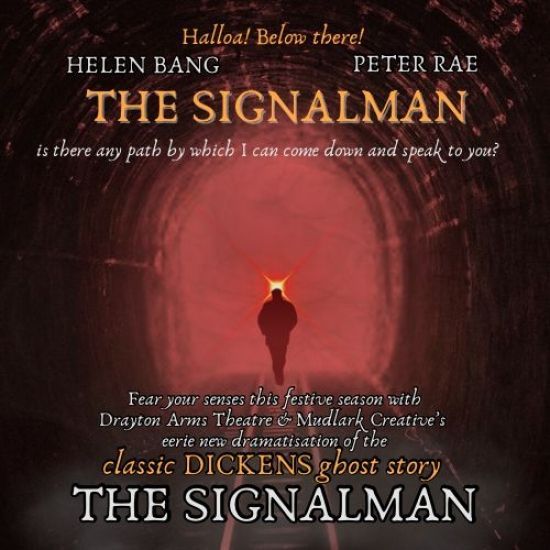REVIEW: TATTOOER by Takuya Kaneshima at Charing Cross Theatre 13 - 26 October 2024

Photos by Mark Senior
‘The art forms are ingeniously incorporated into the story’ ★★★★
This play is inspired by the short story ‘Shisei’ by Junichiro Tanizaki set during Japan’s Edo period. Seikichi is a Tattooer and former Ukiyo-e artist who sets out to “carve his soul into the skin of a beautiful woman”. Ukiyo-e is art made from colourful woodblock prints, popular during Japan’s Edo period. And Japanese tattoos “Irezumi” traditionally depict mythical beasts and plants as well as images borrowed from folklore stories, myths and legends. Images from these art forms were prominent in the play and their influence greatly added to the unique feel of the night.
After a great earthquake in Japan one sister sustains an injury protecting her sibling from falling debris and after many years the sisters decide that Seikichi will use a tattoo to cover up the scar which resulted from the injury. The play focuses on the relationship between the tattooer and the tattooed. Not just between Seikichi and the sisters but also between other members of the cast through other traditional art forms which are ingeniously incorporated into the story by director Hogara Kawai.
It was performed in the most part on a round revolving stage. This was white and had a large spider painted on it with the border marked with handprints plus a few other images which were incorporated into the story. The scenes were given atmosphere by a few dozen paper lanterns hanging directly above and a few other lights. Though mostly dimly lit the focus was always directed to the action and the whole design while not only being very original made for an unique visual spectacle. Both Rob Halliday, the lighting designer and Yu Takeda, the sound designer must be commended for their efforts.
Leo Ashizawa a Japan-born actor based in London with many film and TV credits plays Seikichi. His journey through the story is unpredictable but these demands are met by a dramatic and accomplished performance. Aki Nakagawa as Kazuyo B trained in London and Tokyo and has performed with the Royal Shakespeare Company. As one of the sisters she executes the tattoos under the direction of Seikichi whose tattoos have by this time in the play become world famous. Though made to do much of the work in the house she gets many laughs from the audience by exploiting a quirk of Seikichi’s character and carries off this role brilliantly, commanding the stage for much of the time and helping to carry the story.
During the interval, the audience was treated to a performance by the renowned ink-brush painter Gaku Azuma. He painted a tattoo onto the back of Nozomi de Lencqusaing who would come on in the second half of the play as an English customer. Gaku Azuma then proceeded to continue the pattern onto the floor of the set. Ink-brush painting or sumi-e, uses just simple black ink on a plain white background to capture the beauty of the natural world and was developed in Tang dynasty China. Gaku Azuma’s work “The French Doll” is currently exhibited in the Metropolitan Museum of Art in New York and he has since produced over 200 collaborative works, painting on the bodies of female models.
This was an appropriate idea of Hogara Kawai to include in the evening and not the only visit to the world of performance art during the play. It was much appreciated by the audience who were encouraged to take photographs. I heard more than one person express the desire to buy the completed painting. Though how it will be possible to remove from the theatre seemed to be a problem. The canvas for tonight’s ink-brush painting was Nozomi de Lencqusaing who is a French and Japanese actor based in Japan. He played his part well and is clearly very versatile, being a writer and director as well.
Mao Aono played the part of the sister Kazuyo A. She is a Japanese dramaturge and actress who also participates in Ressenchka works. Ressenchka is a company that produces works of performance art and is directed by Hogara Kawai, which I suppose, explains the amalgamation of the many art-forms in this play and the inclusion of more than one type of performance art; the other one being the meticulous arrangement of a large bundle of clothes onto the English customer in what looked to be very specific and colourful pattern.
Umeda Arts Theater have presented us here with a uniquely Japanese production introducing to us to several forms of art in a well rounded and entertaining show.
Box Office https://charingcrosstheatre.co.uk/theatre/tattooer
Written by Takuya Kaneshima
Translated by Linda Hoaglund
Directed by Hogara Kawai





